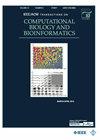Deep Learning in Gene Regulatory Network Inference: A Survey
IF 3.4
3区 生物学
Q2 BIOCHEMICAL RESEARCH METHODS
IEEE/ACM Transactions on Computational Biology and Bioinformatics
Pub Date : 2024-08-13
DOI:10.1109/TCBB.2024.3442536
引用次数: 0
Abstract
Understanding the intricate regulatory relationships among genes is crucial for comprehending the development, differentiation, and cellular response in living systems. Consequently, inferring gene regulatory networks (GRNs) based on observed data has gained significant attention as a fundamental goal in biological applications. The proliferation and diversification of available data present both opportunities and challenges in accurately inferring GRNs. Deep learning, a highly successful technique in various domains, holds promise in aiding GRN inference. Several GRN inference methods employing deep learning models have been proposed; however, the selection of an appropriate method remains a challenge for life scientists. In this survey, we provide a comprehensive analysis of 12 GRN inference methods that leverage deep learning models. We trace the evolution of these major methods and categorize them based on the types of applicable data. We delve into the core concepts and specific steps of each method, offering a detailed evaluation of their effectiveness and scalability across different scenarios. These insights enable us to make informed recommendations. Moreover, we explore the challenges faced by GRN inference methods utilizing deep learning and discuss future directions, providing valuable suggestions for the advancement of data scientists in this field.基因调控网络推断中的深度学习:调查。
了解基因之间错综复杂的调控关系对于理解生命系统的发育、分化和细胞反应至关重要。因此,根据观察到的数据推断基因调控网络(GRN)作为生物应用中的一个基本目标受到了广泛关注。可用数据的激增和多样化为准确推断基因调控网络带来了机遇和挑战。深度学习是一种在多个领域都非常成功的技术,有望为 GRN 推断提供帮助。目前已经提出了几种采用深度学习模型的 GRN 推断方法;然而,对于生命科学家来说,如何选择合适的方法仍然是一个挑战。在本调查中,我们全面分析了 12 种利用深度学习模型的 GRN 推断方法。我们追溯了这些主要方法的演变过程,并根据适用数据的类型对它们进行了分类。我们深入探讨了每种方法的核心概念和具体步骤,详细评估了它们在不同场景下的有效性和可扩展性。这些见解使我们能够提出明智的建议。此外,我们还探讨了利用深度学习的 GRN 推理方法所面临的挑战,并讨论了未来的发展方向,为数据科学家在这一领域的进步提供了宝贵的建议。
本文章由计算机程序翻译,如有差异,请以英文原文为准。
求助全文
约1分钟内获得全文
求助全文
来源期刊
CiteScore
7.50
自引率
6.70%
发文量
479
审稿时长
3 months
期刊介绍:
IEEE/ACM Transactions on Computational Biology and Bioinformatics emphasizes the algorithmic, mathematical, statistical and computational methods that are central in bioinformatics and computational biology; the development and testing of effective computer programs in bioinformatics; the development of biological databases; and important biological results that are obtained from the use of these methods, programs and databases; the emerging field of Systems Biology, where many forms of data are used to create a computer-based model of a complex biological system

 求助内容:
求助内容: 应助结果提醒方式:
应助结果提醒方式:


